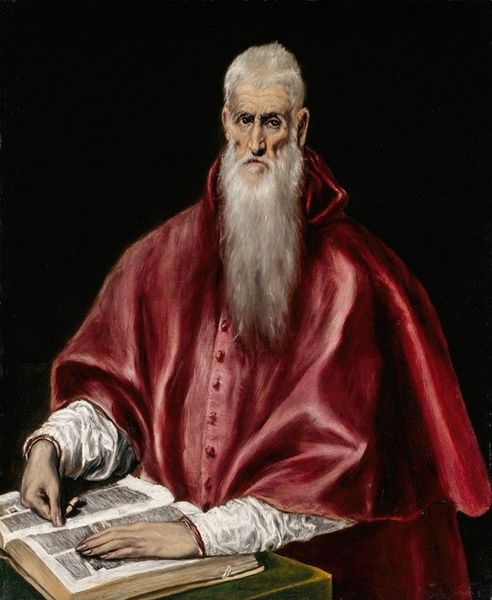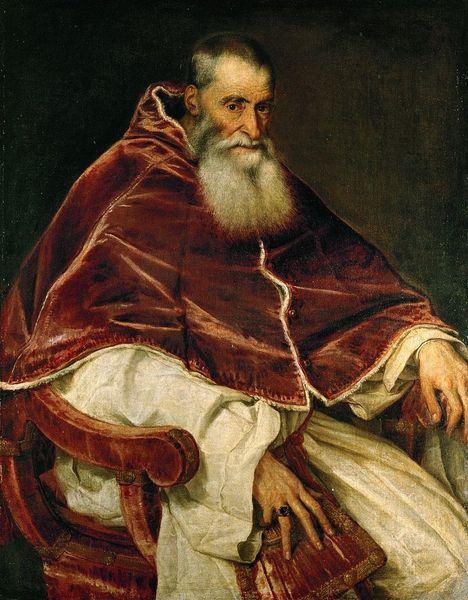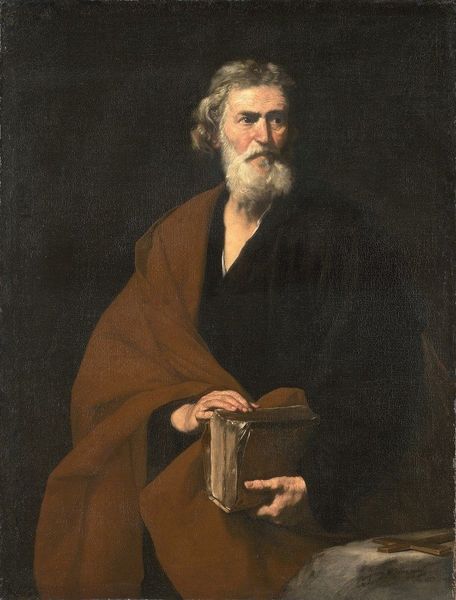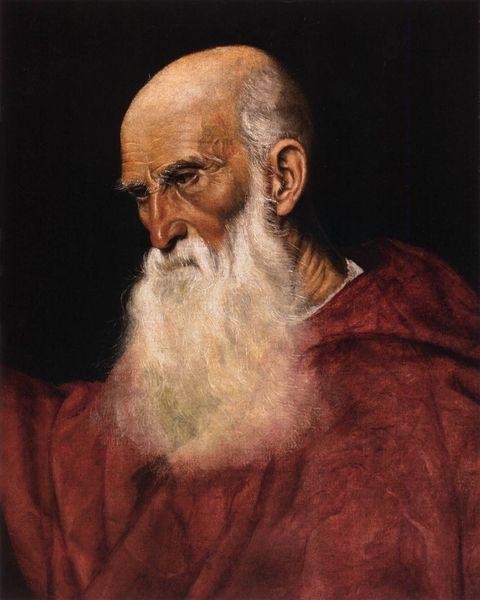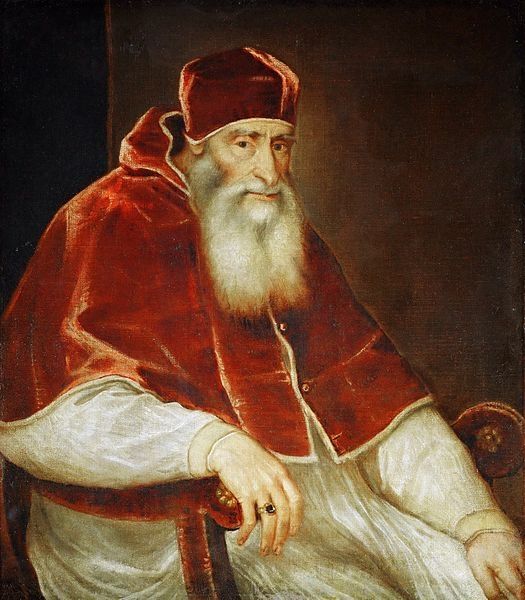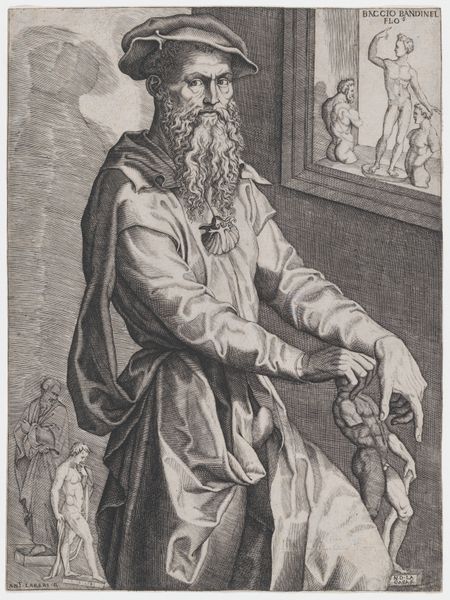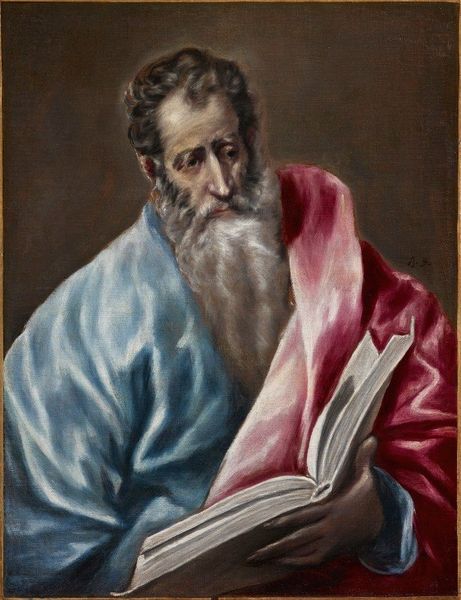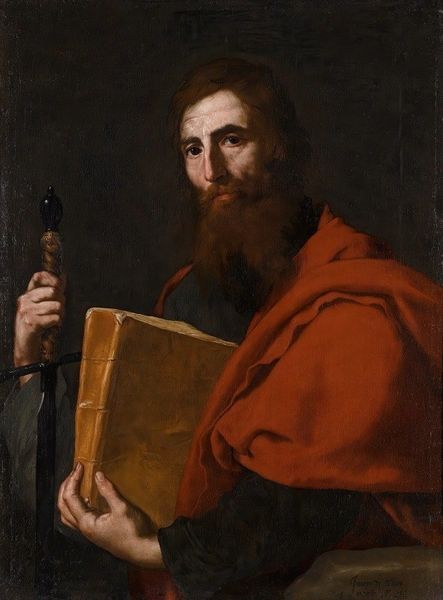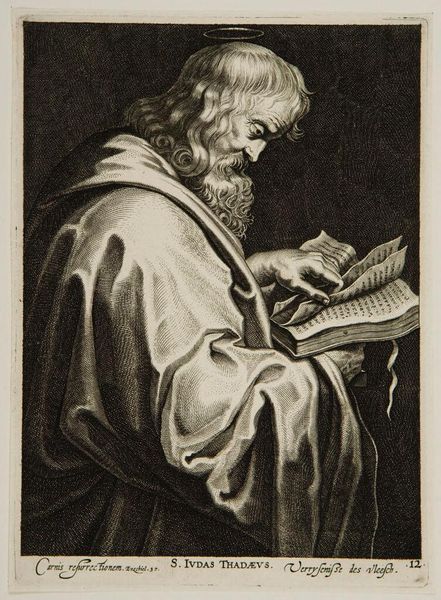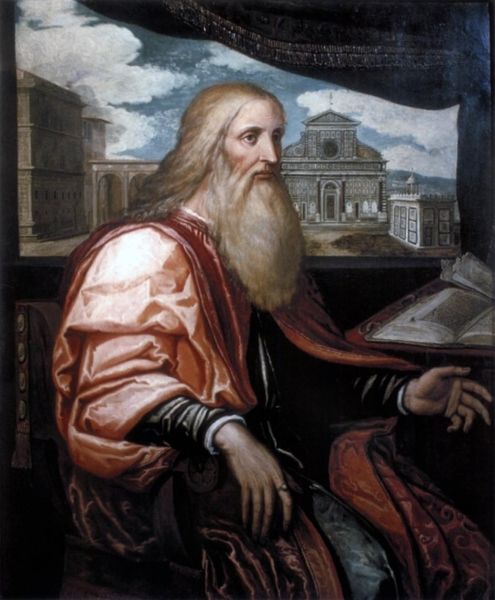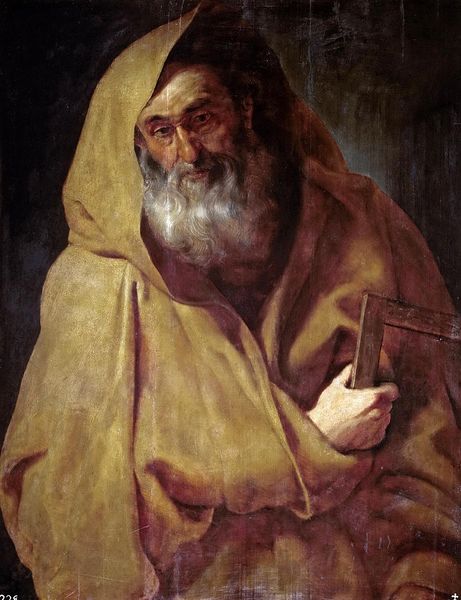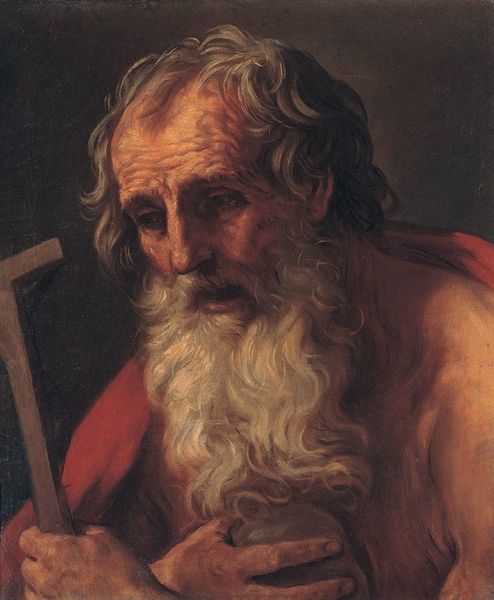
#
prophet
#
portrait reference
#
portrait head and shoulder
#
animal portrait
#
christianity
#
animal drawing portrait
#
portrait drawing
#
facial study
#
facial portrait
#
portrait art
#
fine art portrait
#
christ
#
digital portrait
Dimensions: 59 x 48 cm
Copyright: Public domain
Editor: Here we have El Greco’s “St. Jerome as Cardinal,” painted around 1595. The red robes really dominate – almost drawing attention away from St. Jerome’s face. I wonder, what is the significance of material in this portrait? Curator: Notice how El Greco renders the Cardinal's garments. It is not just fabric; the meticulous pleating, the saturation of the red, the very evident brushstrokes constructing the form. These details don't simply represent clothing. Rather, they convey the power structure inherent in religious vestments. Think of the labor involved, the specialized weaving and dyeing practices—it screams authority. Editor: That's interesting. So, it's not just about faith, but about how that faith is materially expressed and consumed. But does the artist’s technique challenge or reinforce these social structures? Curator: A valid point! El Greco's somewhat mannerist, elongated figures and the vibrant color palette defy conventional representation. They point to the artist's own labor and ingenuity, pushing the boundaries of the acceptable at that time. This piece both acknowledges and questions the visual language of power. It prompts us to think about the production, patronage, and consumption surrounding religious images. Editor: That tension between acceptance and subversion is fascinating. I didn't consider the craftsmanship of the robes as part of the statement, but now the red shouts even louder. Curator: Exactly. By scrutinizing the material elements and means of production, we expose the interwoven social and economic narratives embedded in even the most "spiritual" artworks. I’m glad you see this.
Comments
No comments
Be the first to comment and join the conversation on the ultimate creative platform.
